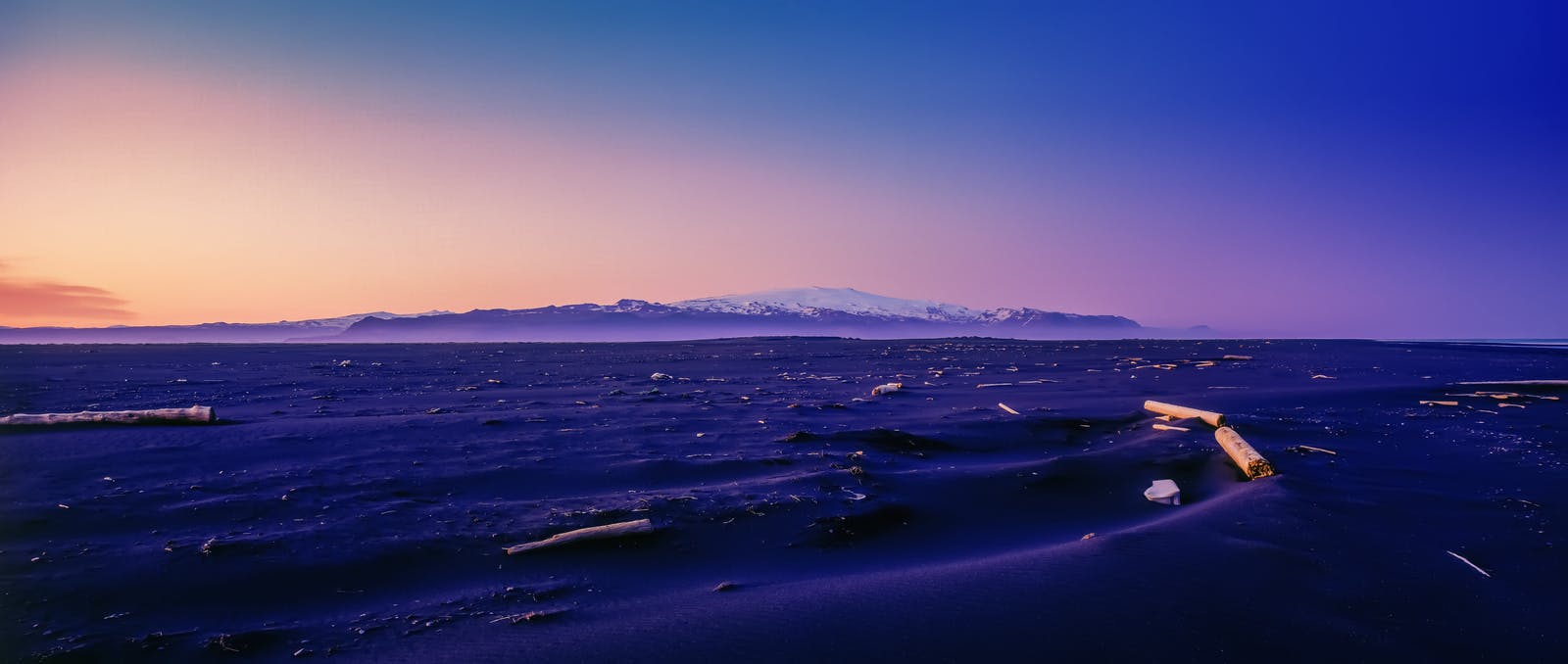
The Eruptions of Eyjafjallajökull Volcano
Halting air traffic across Europe in 2010, Eyjafjallajökull's volcanic eruption became Iceland's most famous volcano. The ash cloud stranded tens of thousands of air travellers for days, and ash rained down on farms and villages surrounding the volcano. But 2010 was not the first timeEyjafjallajökull erupted; it has happened four times since Iceland's settlement.
What Type of Volcano is Eyjafjallajökull?
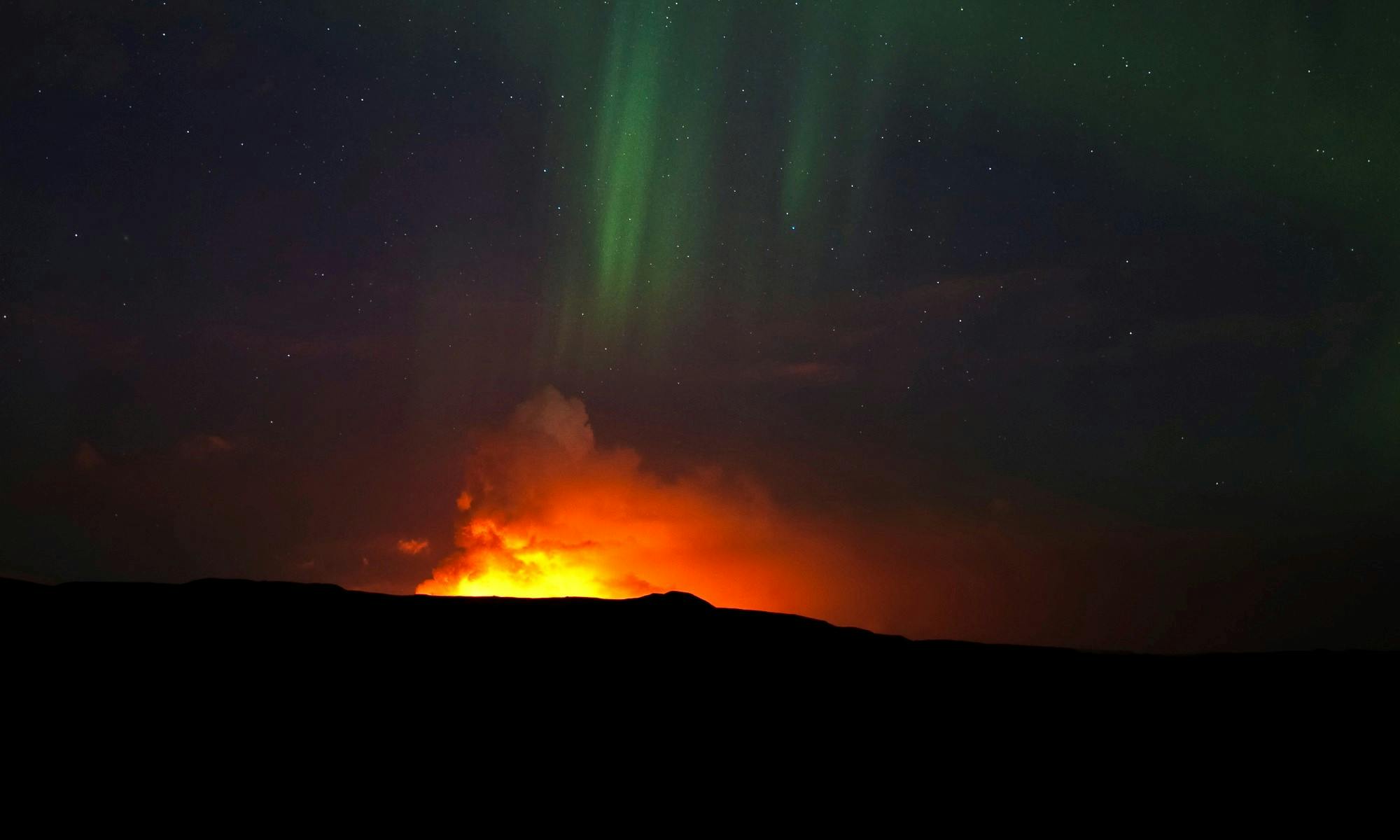
Eyjafjallajökull is a stratovolcano that reaches 1640 m (5380 ft) at its highest point. A magma chamber under the mountain feeds the volcano, part of a chain of volcanoes stretching across Iceland. The top of the volcano features an ice cap responsible for the enormous ash cloud that transpired in the 2010 eruption.
When did Eyjafjallajökull Last Erupt?
The entire volcanic event began on March 20, 2010, and ended on June 23, 2010. In March an eruption started in Fimmvörðuháls ner the glacier margin, lava shot out several hundred meters into the air, lava flowed down the slopes and ash ejection at the time was small. However, in April, powerfu leruption began in the top crater near the centre of the glacier, causing jökulhlaup (meltwater flood) and ejecting fine glass-rich ash to over 8 km (26,000 ft) up into the atmosphere. By the end of June 2010, the eruption had ended.
Eyjafjallajökull Eruption Fallout
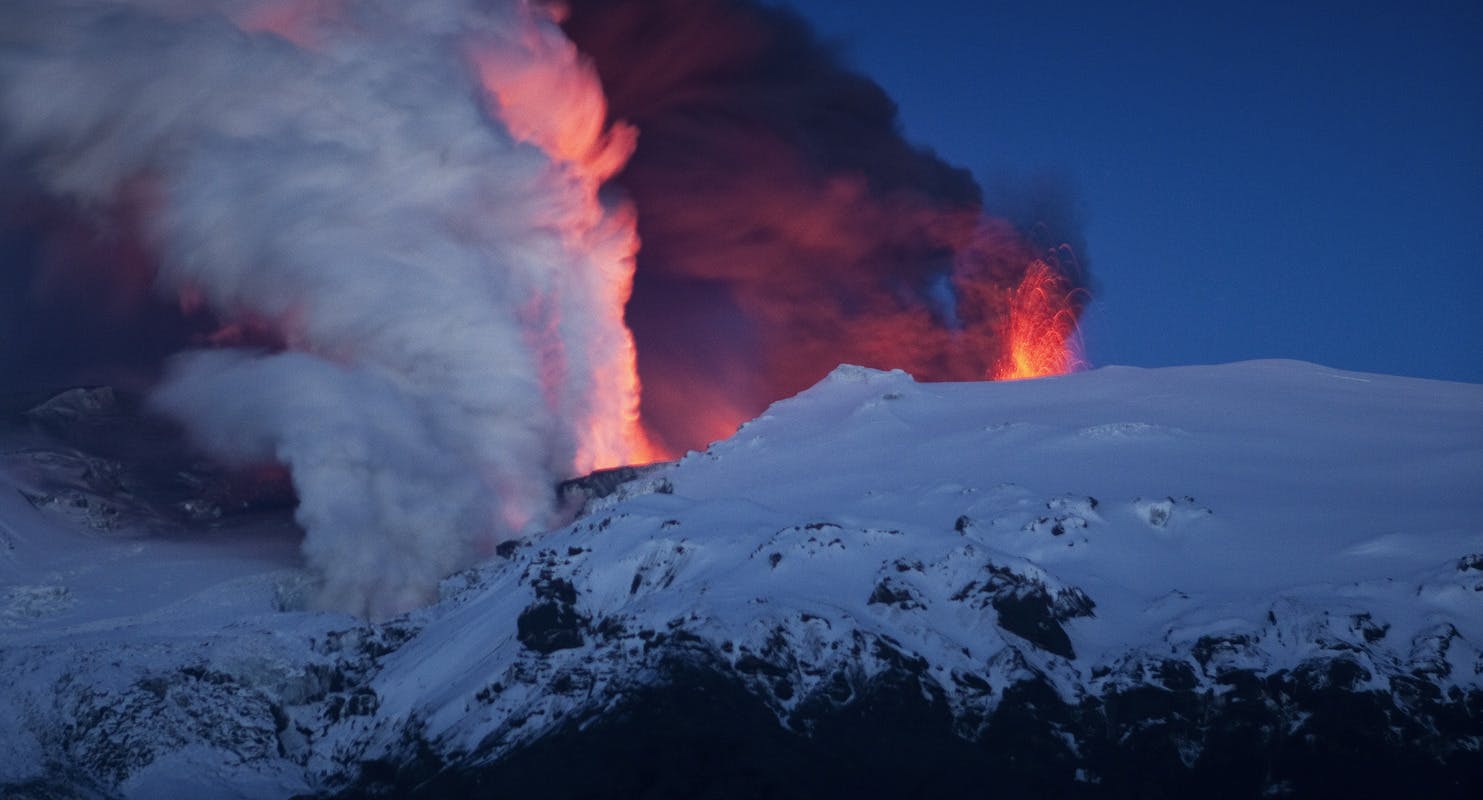
When Eyjafjallajökull's ash cloud disrupted air travel, it was due to several factors, including that the volcano is directly under the jet stream, and the direction of the jet stream was atypically unstable at the time of the eruption. Also, the volcano erupted under thick glacial ice, where meltwater flowed back into the crater, significantly increasing the eruption's power. The lava cooled quickly, creating an ash cloud that drifted directly into the jet stream.
Eyjafjallajökull Eruption History

Since Iceland was settled in the year 874, Eyjafjallajökull erupted in the years around 900, 1612 and from 1821 to 1823 and finally in 2010.
Here is a timeline of Eyjafjallajökull's notable eruptions:
- Around 900: This is the first known eruption of Eyjafjallajökull in the historical time, but details are sparse due to the era, no documentation but a tephra layer indicates its existence
- 1612: An eruption was documented, but little information exists about the scale or exact impact of this event
- 1821-1823: This eruption lasted for more than a year and was followed by several years of aftershocks. It caused significant flooding and damage, but no human lives were lost
- 2010: This was one of the most significant eruptions, lasted from April 14th to October 20th
It has been said that the 1821-1823 eruption released an enormous amount of fluoride, which is believed to have negatively impacted the health of humans and farm animals at the time.
Is Eyjafjallajökull Safe to Visit?
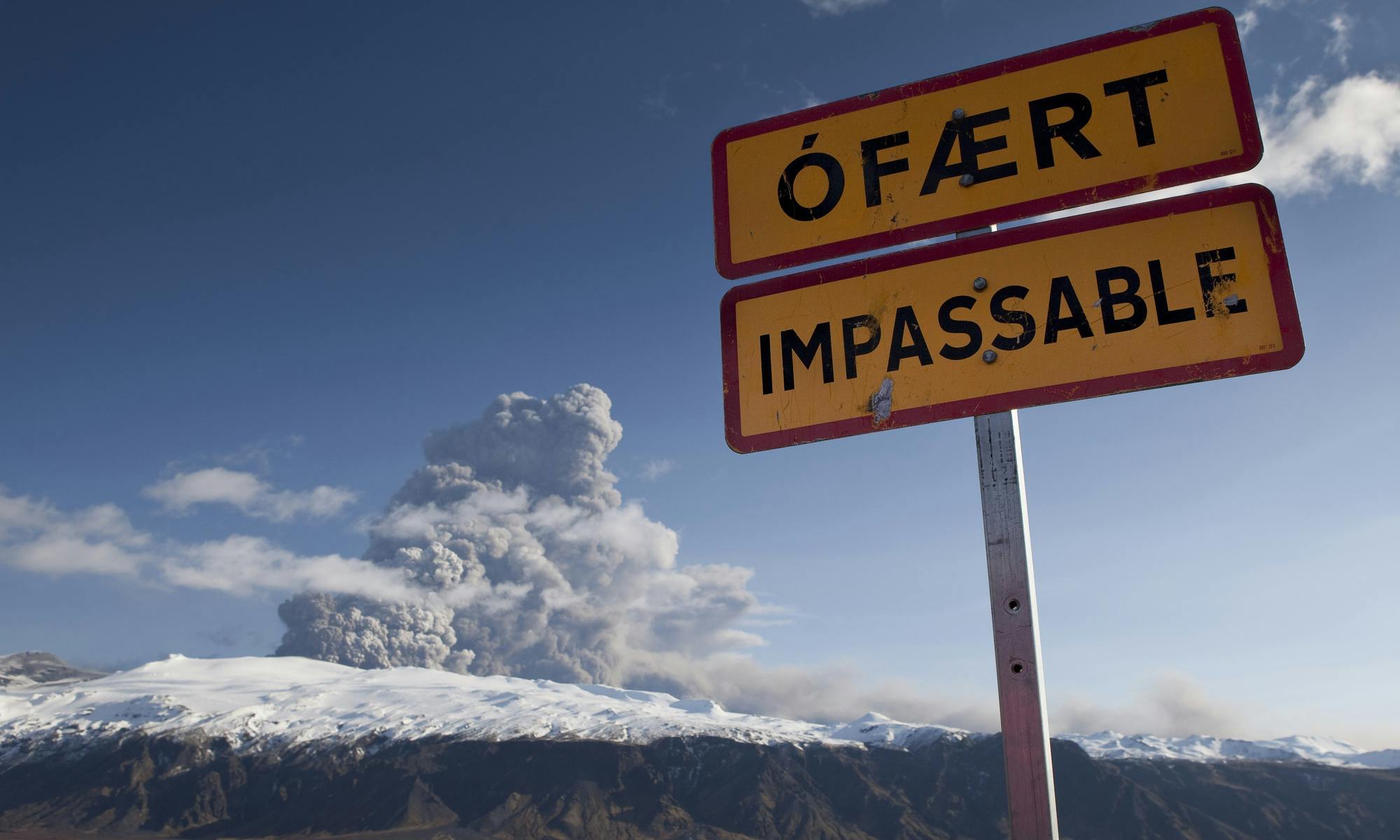
As of June 2023, Eyjafjallajökull is safe for travellers to visit and is seen on most South Coast tours. In the town of Hvolsvöllur, a visitor's centre focuses on a family farm, Þorvaldseyri, which was one of the many damaged by the floods and ash of the most recent eruption. It is improbable that Eyjafjallajökull will erupt again any time soon, as there are typically hundreds of years between each eruption.
Experiencing an Eruption
Although Eyjafjallajökull is not erupting at the moment, visit Perlan’s Force of Nature Exhibit for an immersive experience. Using a combination of cutting-edge interactive technology and comprehensive scientific information, this exhibit offers a first-hand experience of the sheer power of natural forces such as earthquakes, wind, and notably, volcanic eruptions.
FAQ
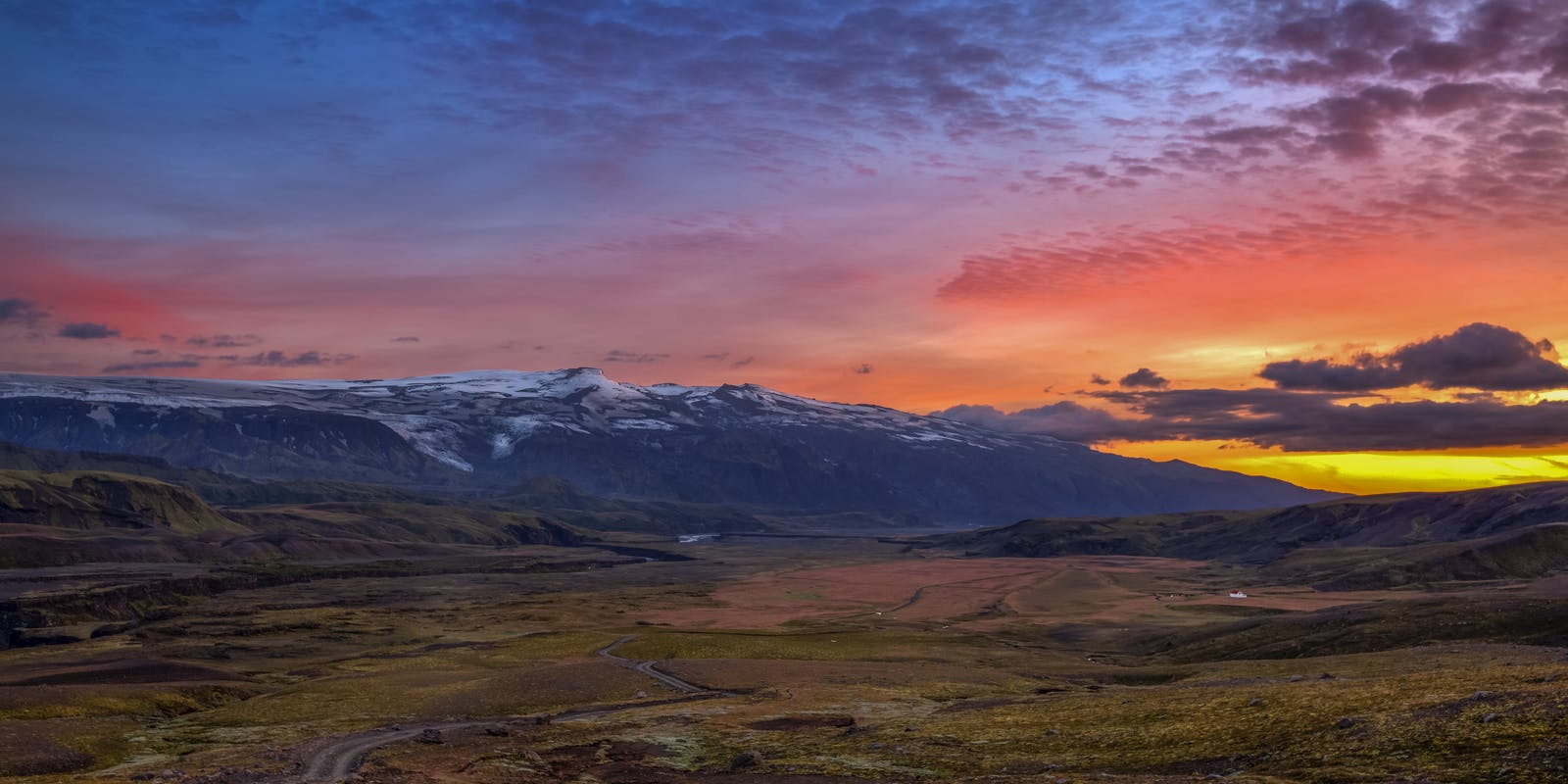
How many people died in the Eyjafjallajökull eruption of 2010?
There were no deaths from the eruption. There are warning systems in place, and people that were in the area evacuated. The most damage came from the ash cloud that darkened the area, drastically dropping the air quality.
About 800 people were evacuated in fear of dangerous glacial floods, which have destroyed Icelandic farms in the past. Locals were ordered to keep their animals inside, and those with respiratory problems were told they should also stay indoors as the air quality was very poor.
How do you pronounce Eyjafjallajökull?
For Icelanders, it was amusing to hear foreign news anchors struggle to pronounce the volcano's name on the nightly news. For fun, clips were regularly shown on Icelandic television, and Icelanders ate it up. For the record, it's pronounced EYE-ya-fyat-lah-YOH-kuht.
How many flights were cancelled because of Eyjafjallajökull?
More than 95,000 flights were cancelled all across Europe during the 6-day airspace ban, with later figures estimating 107,000 flights were cancelled during eight days. This accounted for an astonishing 48% of total air traffic and roughly 10 million passengers.
How big was the Eyjafjallajökull eruption of 2010?
In Iceland, it was a catastrophic event for the area around the volcano. Ash rained down on farms and villages surrounding Eyjafjallajökull; the area was dark and full of ash and extremely poor air quality.
Popular articles

Reykjanes Volcanoes Overview
Enjoy a complete overview of the Reykjanes Volcanoes from 2021-2024. Learn about its geology, recent activity, and visitor tips for a safe, memorable experience.

Reykjanes Peninsula Volcanoes: Sundhnúksgígar Eruptions
The anticipated volcano has erupted in the Reykjanes Peninsula, the site is being called Sundhnúkagígar. See the historic insights on the seismic activity and volcanic eruptions.

Earthquakes in Iceland
Earthquakes in Iceland are a fact of life. Each year, hundreds of small tremors shake the earth, a reminder of the country’s position on a tectonic plate boundary.

Volcano Museums and Exhibitions in Iceland
If you don't manage to visit an actively erupting volcano in Iceland - Experience its force at one of these excellent volcano museums and exhibitions in Iceland.

Top 10 Places To See the Northern Lights in Iceland
You can see the northern lights across the country, but some spots are more suitable than others. Find the best place to see the northern lights in Iceland.

Ice Caves From Reykjavik
Travel beyond the capital for a closer look at an ice cave under one of Iceland’s glaciers. If you can’t spare the time, experience Perlan’s ice cave in Reykjavik.